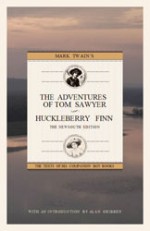 As you may recall, three years ago NewSouth Books published an edition of Mark Twain’s Adventures of Huckleberry Finn and Adventures of Tom Sawyer in which editor Alan Gribben replaced the n-word with “slave,” and the in-word (“Injun”) with “Indian.” Many (including yours truly) criticized Gribben’s decision, and most critics focused on Huckleberry Finn. But who actually read his edition? As I write a chapter on Bowdlerized children’s literature, I decided to read Gribben’s expurgated Huck Finn. My central questions were: What’s the effect of Bowdlerizing this novel? How does it change? How doesn’t it change? Does it approach Gribben’s goal of creating a book that “can be enjoyed just as deeply and authentically if readers are not obliged to confront the n-word on so many pages” (12)?
As you may recall, three years ago NewSouth Books published an edition of Mark Twain’s Adventures of Huckleberry Finn and Adventures of Tom Sawyer in which editor Alan Gribben replaced the n-word with “slave,” and the in-word (“Injun”) with “Indian.” Many (including yours truly) criticized Gribben’s decision, and most critics focused on Huckleberry Finn. But who actually read his edition? As I write a chapter on Bowdlerized children’s literature, I decided to read Gribben’s expurgated Huck Finn. My central questions were: What’s the effect of Bowdlerizing this novel? How does it change? How doesn’t it change? Does it approach Gribben’s goal of creating a book that “can be enjoyed just as deeply and authentically if readers are not obliged to confront the n-word on so many pages” (12)?
These are my answers. (Trigger warning: the n-word appears multiple times below. I’ve included it because it’s offensive, and I didn’t feel I could talk about the novel’s offensiveness without using the offending term.)
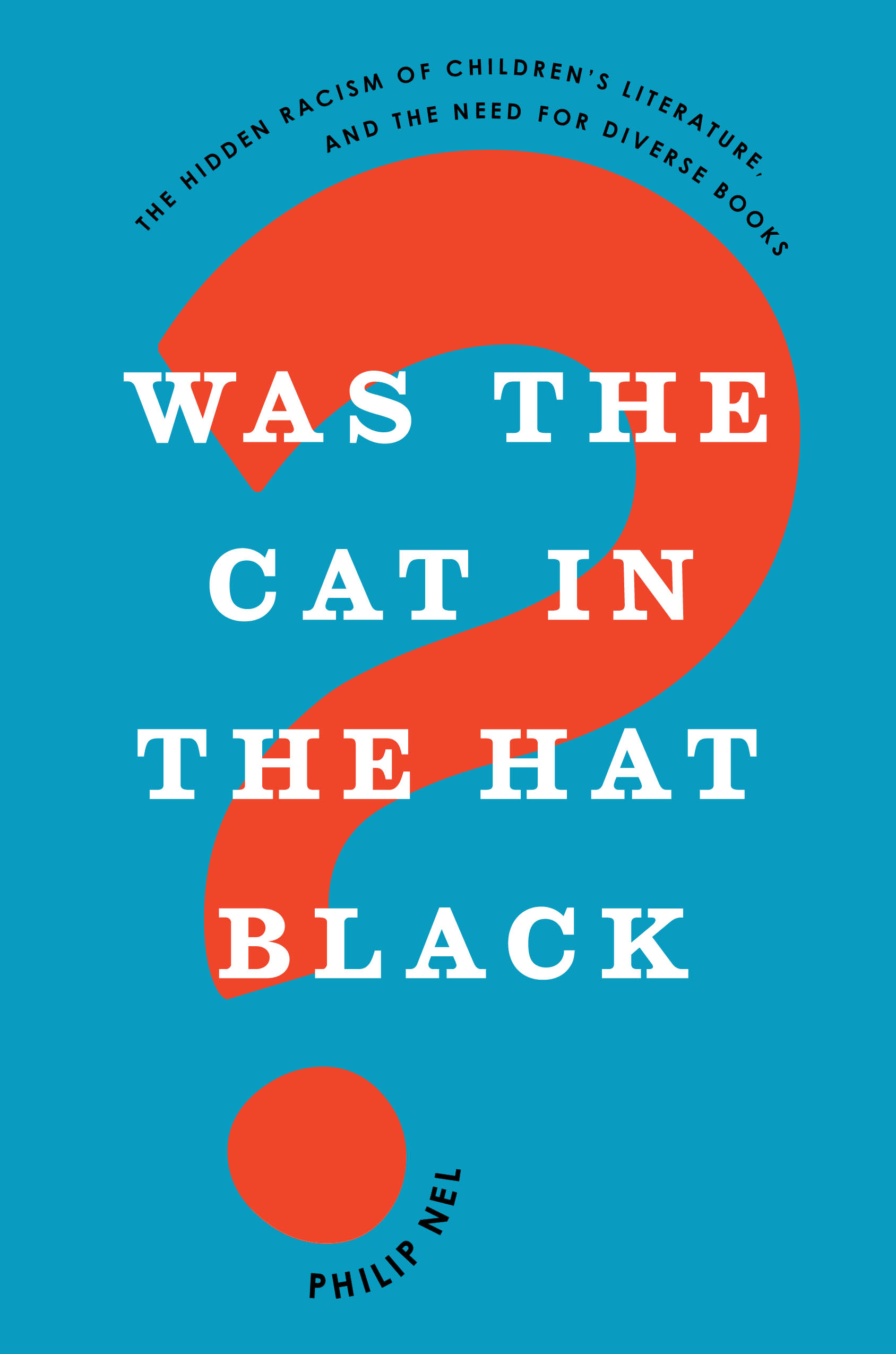 NOTE. Pieces of this appear (in revised form) in a far better inquiry into this subject – Chapter 2 (“How to Read Uncomfortably: Racism, Affect, and Classic Children’s Books”) of Was the Cat in the Hat Black?: The Hidden Racism of Children’s Literature and the Need for Diverse Books (Oxford UP, 2017), pp. 67-106.
NOTE. Pieces of this appear (in revised form) in a far better inquiry into this subject – Chapter 2 (“How to Read Uncomfortably: Racism, Affect, and Classic Children’s Books”) of Was the Cat in the Hat Black?: The Hidden Racism of Children’s Literature and the Need for Diverse Books (Oxford UP, 2017), pp. 67-106.
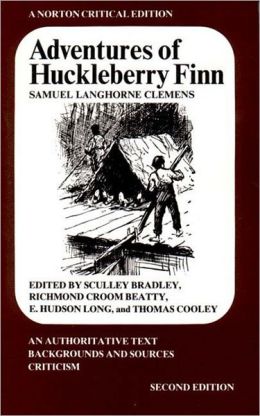 1. Reading an expurgated edition heightens one’s awareness of what has been changed. When listening to the radio and I hear a word that has been bleeped, silenced, or (more typically) electronically garbed, the omission stands out more than if it had not been altered. If I know the unexpurgated version of the song, my brain instinctively fills in the missing word; if I don’t know it, then the absent rhyme prompts my brain to produce an uncensored version of the lyric. The same is true with “slave” in the NewSouth Edition of Huck Finn: each time I encounter the word “slave,” I first think “Is that an expurgated n-word?” I assume that it is, but always verify my assumption by checking my Norton Critical Edition of Huck Finn. In its many omissions, the NewSouth edition actually made me more aware of the 219 instances of the word “nigger” in Huck Finn.
1. Reading an expurgated edition heightens one’s awareness of what has been changed. When listening to the radio and I hear a word that has been bleeped, silenced, or (more typically) electronically garbed, the omission stands out more than if it had not been altered. If I know the unexpurgated version of the song, my brain instinctively fills in the missing word; if I don’t know it, then the absent rhyme prompts my brain to produce an uncensored version of the lyric. The same is true with “slave” in the NewSouth Edition of Huck Finn: each time I encounter the word “slave,” I first think “Is that an expurgated n-word?” I assume that it is, but always verify my assumption by checking my Norton Critical Edition of Huck Finn. In its many omissions, the NewSouth edition actually made me more aware of the 219 instances of the word “nigger” in Huck Finn.
2. Gribben insists that this edition “is emphatically not intended for academic scholars” (16). I take his point, and would not assume that younger readers would be reading (as I was) with a non-Bowdlerized edition on hand. However, racism is the central theme of Huck Finn. Not only is it impossible to create an “authentic” version of the novel without the n-word, but presenting this text to young readers as Mark Twain’s Huckleberry Finn perpetuates structural racism. Using “slave” instead of “nigger” naturalizes the racism in Huck’s caricature of Jim. Retaining the n-word makes us pay closer attention to Huck’s racism: though he is less racist than some of the other characters in the book, our narrator casually slings around the n-word, too. Gribben downplays the profound significance of removing this word: “Although the text loses some of the caustic sting that the n-word carries, that price seems small compared to the revolting effect that the more offensive word has on contemporary readers” (13).
The problem is: the caustic sting is the point. Enduring the repeated offensiveness of the n-word is a core experience of reading Huckleberry Finn. Since I am neither a nineteenth-century Americanist nor a Twain scholar, I take the edition’s back cover at its word when it describes Professor Gribben as a “Twain scholar,” and notes that he “co-founded the Mark Twain Circle of America,” and “compiled Mark Twain’s Library: A Reconstruction.” I wonder, however, if Twain scholars still think of Gribben as a Twain scholar? To claim (as Gribben does) that Huck Finn can be both “authentic” and free of its racial slurs is preposterous.
 3. If I am correct in identifying the pink-faced Gribben on the back cover as white, then the NewSouth edition is also a telling example of how white privilege conceals itself from itself. Gribben tries to dilute Huck’s and Twain’s racism in order to preserve a classic American novel, obscuring the ways in which (as Toni Morrison has argued) the predominantly white American canon depends upon not just blackness but upon racism. Gribben colludes in the partial erasure of racism from American literary history, perpetuating a kind of “racism lite” – what Eduardo Bonilla-Silva calls “racism without racists.” Though Huck, Tom, the King, the Duke, and Uncle Silas all treat Jim as less than fully human because of his race, they never once – in the NewSouth edition – use the n-word when doing so. But changing the word does not change the stereotype. In the NewSouth edition, Jim may be called a slave, but the book still caricatures him as a nigger.
3. If I am correct in identifying the pink-faced Gribben on the back cover as white, then the NewSouth edition is also a telling example of how white privilege conceals itself from itself. Gribben tries to dilute Huck’s and Twain’s racism in order to preserve a classic American novel, obscuring the ways in which (as Toni Morrison has argued) the predominantly white American canon depends upon not just blackness but upon racism. Gribben colludes in the partial erasure of racism from American literary history, perpetuating a kind of “racism lite” – what Eduardo Bonilla-Silva calls “racism without racists.” Though Huck, Tom, the King, the Duke, and Uncle Silas all treat Jim as less than fully human because of his race, they never once – in the NewSouth edition – use the n-word when doing so. But changing the word does not change the stereotype. In the NewSouth edition, Jim may be called a slave, but the book still caricatures him as a nigger.
Even when Twain’s novel tries to assert Jim’s humanity, such as the scene in which he remembers his deaf daughter Elizabeth, it still calls him “nigger” and represents him as one. Just paragraphs prior to the Elizabeth scene, Huck hears Jim talking in his sleep about “his wife and his children,” feeling “low and homesick.” He then observes, “I do believe he cared just as much for his people as white folks does for their’n. It don’t seem natural, but I reckon it’s so…. He was a mighty good nigger, Jim was” (125). Changing that line to “He was a might good slave, Jim was” (393) not only softens Huck’s racist condescension towards Jim, but conflates racial category (“nigger”) with job description (“slave”) – and there are moments (in Twain’s novel) when Huck distinguishes between slave and nigger. For example, at the beginning of Huck’s crisis of conscience, he makes the distinction: “Once I said to myself it would be a thousand times better for Jim to be a slave at home where his family was, as long as he’d got to be a slave” (168). When this passage appears in the NewSouth edition (as it does, unchanged), there’s no way of knowing that Huck is making this lexical distinction between the two terms because NewSouth replaces all instances of the n-word with “slave.”
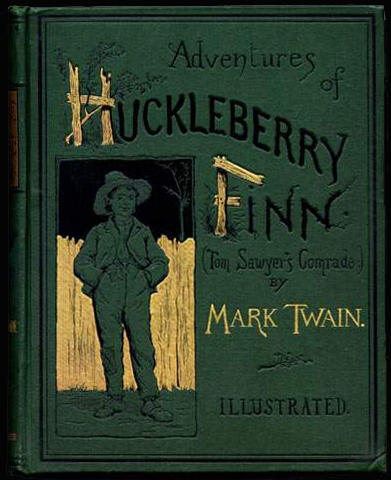 4. The distinction is important because Twain’s characters suffer from varying degrees of racism. Though he makes liberal use of the n-word, Huck is actually less racist than (for example) his father. On some (though certainly not all) of the occasions Huck uses the n-word, he is reflecting the judgment of the community. During that same crisis-of-conscience scene, he says, “It would get all around that Huck Finn helped a nigger to get his freedom” (168). In conveying others’ imagined evaluation of his behavior, he echoes their style of speech: in context, the n-word could be read as Twain’s criticism of those who think that people of color should be enslaved. In contrast, Huck’s father consistently denies the humanity of people of color. Pap’s use of the n-word not only offers some indication of where Huck may have learned to deploy the term so frequently, but allows readers to make a moral distinction between father and son. Pap describes “a free nigger,” a “mulatter, most as white as a white man” who is a “p’fessor in a college and could talk all kinds of languages,” and then rails against the man’s right to vote: “when they told me there was a State in this country where they’d let that nigger vote, I drawed out. I says I’ll never vote again” (27). In changing the word “nigger” to “slave,” NewSouth not only partly obscures where Huck learned his racist language, but also diminishes the full violence of Pap’s hatred.
4. The distinction is important because Twain’s characters suffer from varying degrees of racism. Though he makes liberal use of the n-word, Huck is actually less racist than (for example) his father. On some (though certainly not all) of the occasions Huck uses the n-word, he is reflecting the judgment of the community. During that same crisis-of-conscience scene, he says, “It would get all around that Huck Finn helped a nigger to get his freedom” (168). In conveying others’ imagined evaluation of his behavior, he echoes their style of speech: in context, the n-word could be read as Twain’s criticism of those who think that people of color should be enslaved. In contrast, Huck’s father consistently denies the humanity of people of color. Pap’s use of the n-word not only offers some indication of where Huck may have learned to deploy the term so frequently, but allows readers to make a moral distinction between father and son. Pap describes “a free nigger,” a “mulatter, most as white as a white man” who is a “p’fessor in a college and could talk all kinds of languages,” and then rails against the man’s right to vote: “when they told me there was a State in this country where they’d let that nigger vote, I drawed out. I says I’ll never vote again” (27). In changing the word “nigger” to “slave,” NewSouth not only partly obscures where Huck learned his racist language, but also diminishes the full violence of Pap’s hatred.
5. Reading the word “nigger” should make you at least uncomfortable, and at most angry. Since Twain’s Huckleberry Finn is also satirical, a key emotional experience of reading is the collision between anger and humor. On the one hand, the novel has lots of satirical targets – romantic adventure narratives, religion, human gullibility, superstition in general, and (in particular) superstition in “niggers.” Its attempts at humor bump uncomfortably into its racism. The novel invites us to laugh at the superstitions of Nat (the slave who feeds Jim, on Uncle Silas’s plantation), and of Jim himself. Yet, because it presents both characters – especially Nat – as racial caricatures, the jokes aren’t funny. (Well, racists may find them funny, but other people are less likely to laugh.) Other jokes – the mocking of the King and the Duke’s con-artistry, Emmeline Grangerford’s morbid poetry – work much better. The different affective tones make for an unsettling read.
Young people should learn to read uncomfortably, to be able to cope with experiences that upset them. Huck Finn’s mix of comedy and bigotry offers an ideal occasion to do just that. In its attempts to sanitize the novel’s bigotry, Gribben’s NewSouth edition makes it harder to have that conversation.
6. Though his efforts were well-intentioned, Alan Gribben, in his NewSouth edition, attempts to conceal racism’s history and pervasiveness in American culture, while enshrining as a classic one of the books that perpetuates racism – and, in some ways, critiques racism. (I’ve dwelled on the novel’s shortcomings here, but it’s fair to call Twain a racial progressive in nineteenth-century America. Despite and because of that, it’s also fair to call both Twain and the novel racist.)
7. Mark Twain’s The Adventures of Huckleberry Finn is a classic American novel and a racist American novel. Indeed, its racism can not be separated from its genius. These twin qualities provide two excellent reasons to teach it in American high schools and colleges. White Americans need to confront America’s racist past so that they can stop perpetuating that racism in the present. People of color need to learn about America’s racist past so that they can survive in America’s racist present.
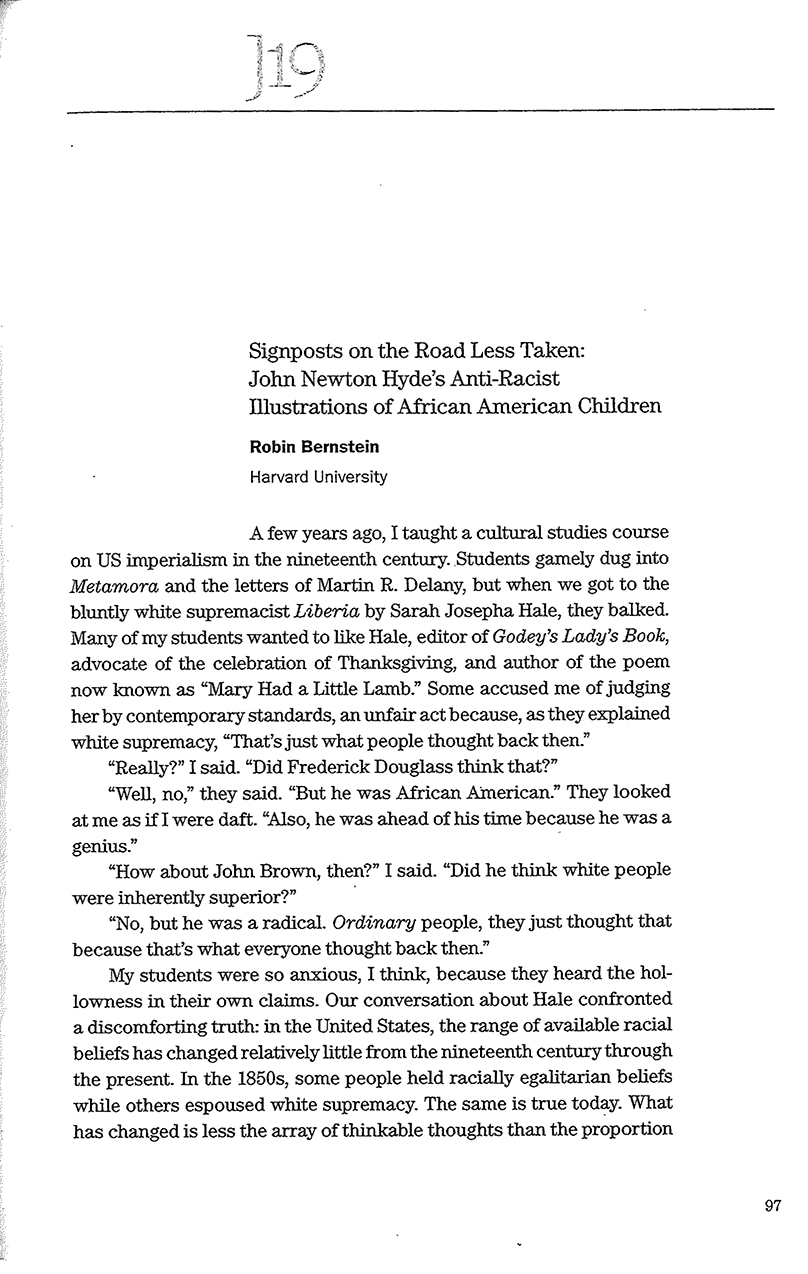 8. There will be those who, upon reading this, say: You’re judging a nineteenth-century novel by twenty-first century standards. If you are one of those people, I highly recommend an essay by Robin Bernstein:
8. There will be those who, upon reading this, say: You’re judging a nineteenth-century novel by twenty-first century standards. If you are one of those people, I highly recommend an essay by Robin Bernstein:
- “Signposts on the Road Less Taken: John Newton Hyde’s Anti-Racist Illustrations of African-American Children,” The Journal of Nineteenth-Century Americanists 1.1 (Spring 2013): 97-119.
If you lack access to it, I will send you a pdf (my email address is at right, under “A note on mp3s”). In it, she makes the excellent point that the “that’s what everyone thought back then” argument is a weak one: “In the 1850s, some people held radically egalitarian beliefs, while others espoused white supremacy. The same is true today. What has changed is less the array of thinkable thoughts than the proportion of people espousing each belief. … But the full set of racial beliefs has remained relatively stable” (97-98). As she notes, this “relative stability of the range of racial beliefs is important because it refutes a narrative of history that falsely implies that progress is inevitable” (98). In Mark Twain’s time, all people did not hold the same beliefs. To defend Huck Finn’s racism on the grounds that they did colludes with a white supremacist understanding of history, excusing past bigotry without acknowledging the damage inflicted upon real people both past and present.
9. Gribben’s NewSouth edition not only fails to achieve its stated goals. It does real harm to those who read it. Lying to young readers is not educating them. Racist literature should of course be taught alongside other fiction and non-fiction that provide students with more accurate visions of history, allowing them to evaluate critically what they read. But lying via omission is a poor – indeed, a dangerous – solution to dealing with racism.
10. I hope it goes without saying that I welcome criticism of my analysis, above. This chapter is a work in progress. Furthermore, like Alan Gribben (if I’ve read his photo correctly), I am a white male. In the U.S., my skin color and gender allow me not only to evade the daily pain of racism, but also to benefit from it (see “white privilege” in no. 3, above). So, while I hope I’m discussing race and racism with nuance and sensitivity, I know that my own privilege may blind me to the ways I which I’m failing to do so. Where you see me failing, please call me to task. I want to know what I’m getting wrong. Thank you.
Indeed, if you’ll be at the American Studies Association conference next month, elements of the above will appear in my paper – which also addresses Doctor Dolittle, Charlie and the Chocolate Factory, and the role of affect in teaching about all three of these novels. I’d welcome your criticism and comments there, too. The session (no. 408) is Sunday at 12 noon. And, if you’re able to come, you’ll also be treated to three much wiser panelists: Brigitte Fielder, Lori L. Brooks, and Melissa Adams-Campbell.
Related posts on this blog:
- “Huckleberry Finn, Tom Sawyer, and Offensiveness” (5 Jan. 2011)
- “Can Censoring a Children’s Book Remove Its Prejudices?” (19 Sept. 2010)
- “Ferguson: Response and Resources” (24 Aug. 2014)
- “Was the Cat in the Hat Black?” (22 June 2014)
- “‘The Boundaries of Imagination’; or, the All-White World of Children’s Books, 2014” (17 Mar. 2014)

Jonathan Dresner
Philip Nel
Marjorie
Pingback: What’s the Story Behind Banned Books Week? - Renew Democracy Initiative